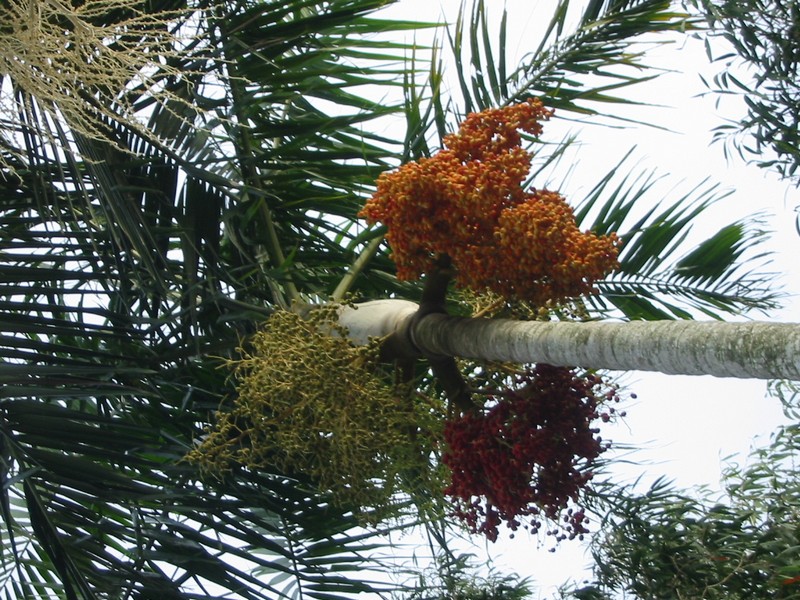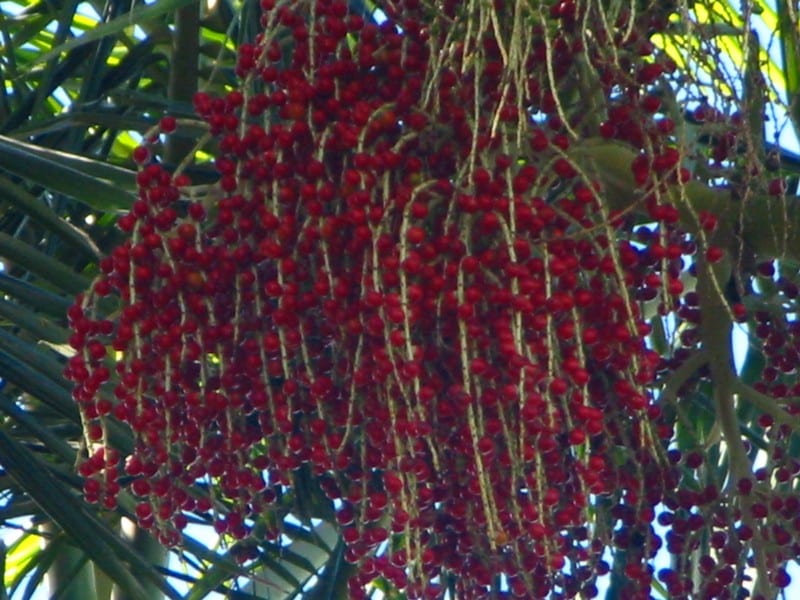Alexandra palm
Archontophoenix alexandrae, Fam. Arecaceae






A single stemmed, feather palm, grows to 35m tall, crown shaft.
| Weed Category: | |
| Weed: | No |
| Form or habit: | Palm or palm-like plant |
| Family: | Arecaceae |
| Leaf: | Compound Unknown Leaves reach up to 4.5m in length, pinnate; 60-80 pinnae on each side and up to 75cm long by 3-5cm wide, leaves green with underside of leaf covered in silvery scales. |
| Flower conspicuous: | Conspicuous |
| Flower colour: |
White, Cream |
| Flower description: | Panicle 50-100cm long, pendulous like branchlets bearing both male and female white to cream flowers, at the base of the crownshaft, all year round. |
| Fruit conspicuous: | Conspicuous |
| Fruit colour: |
Green, Red |
| Fruit: | Fleshy |
| Fruit description: | Round, 8-14mm diameter, turn from green to red at maturity, contains one seed per fruit. |
| Habitat: | Gallery (riverine or riparian) forest, rainforest. |
| Distribution | Eastern Queensland: Melville Range to Gladstone area. |
| Food source for: | Fruit eaten by musky rat kangaroo, bush rat, spectacled and grey-headed flying foxes, figbird, wompoo, superb and rose-crowned fruit doves, pied imperial and topknot pigeons, sulphur crested cockatoo, common koel, noisy pitta, metallic starling, Victoria's rifle bird and southern cassowary. Nectar provides for Eungella honey eater and leaves support the larval stage of the yellow palm dart, orange palm dart, white club swift butterfly and Agonoxena phoenicia (moth). |
| Toxicity: | No toxicity known |
| Origin: | Australia |
| Notes: | Some Aboriginal communities cooked the fruits and the growing tip of the palm is also edible. |
| Information sources: | Melzer R. & Plumb J. (2007) Plants of Capricornia. |